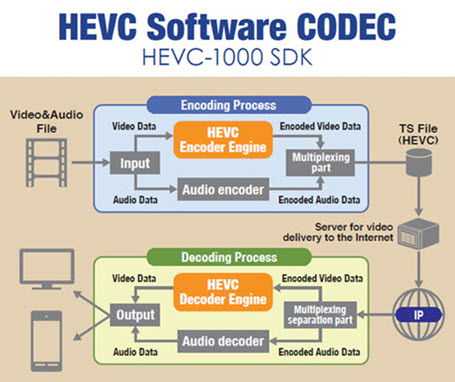

A point of comparison would be that an MP3 file can be played in any MP3 player, whether it was created through iTunes, Windows Media Player, LAME, or the common Fraunhofer encoder. Therefore, implementations for a particular profile (such as DivX or Nero Digital which are implementations of Advanced Simple Profile and Xvid that implements both profiles) are all technically identical on the decoder side. Most of the video compression schemes standardize the bitstream (and thus the decoder) leaving the encoder design to the individual implementations. The most commonly deployed profiles are Advanced Simple and Simple, which is a subset of Advanced Simple. MPEG-4 Part 2 has approximately 21 profiles, including profiles called Simple, Advanced Simple, Main, Core, Advanced Coding Efficiency, Advanced Real Time Simple, etc.

Mpeg 2 decoder windows 7 tv#
To address various applications ranging from low-quality, low-resolution surveillance cameras to high definition TV broadcasting and DVDs, many video standards group features into profiles and levels.
Mpeg 2 decoder windows 7 full#
See Patent holders below for a full list of patent holders.Įditions MPEG-4 Visual editions Edition The majority of patents used for the MPEG-4 Visual format were from three Japanese companies: Mitsubishi Electric (255 patents), Hitachi (206 patents), and Panasonic (200 patents). The standard was developed using patents from over a dozen organizations, listed by MPEG LA in a patent pool. The specification was authored by Swiss-Iranian engineer Touradj Ebrahimi (later the president of JPEG) and Dutch engineer Caspar Horne. The MPEG-4 Visual format was developed by the Moving Picture Experts Group (MPEG) committee.
Mpeg 2 decoder windows 7 verification#
The first MPEG-4 Video Verification Model (simulation and test model) used ITU-T H.263 coding tools together with shape coding. MPEG-4 Part 2 is partially based on ITU-T H.263.

(MPEG-4 Video decoder is natively capable of decoding a basic form of H.263.) In MPEG-4 Visual, there are two types of video object layers: the video object layer that provides full MPEG-4 functionality, and a reduced functionality video object layer, the video object layer with short headers (which provides bitstream compatibility with base-line H.263). MPEG-4 Part 2 is H.263 compatible in the sense that a basic H.263 bitstream is correctly decoded by an MPEG-4 Video decoder. MPEG-4 Part 10 is commonly referred to as H.264 or AVC, and was jointly developed by ITU-T and MPEG. Note that MPEG-4 Part 10 defines a different format from MPEG-4 Part 2 and should not be confused with it. Several popular codecs including DivX, Xvid, and Nero Digital implement this standard. It is uses block-wise motion compensation and a discrete cosine transform (DCT), similar to previous standards such as MPEG-1 Part 2 and H.262/MPEG-2 Part 2. It belongs to the MPEG-4 ISO/IEC standards. MPEG-4 Part 2, MPEG-4 Visual (formally ISO/ IEC 14496-2 ) is a video compression format developed by the Moving Picture Experts Group (MPEG).


 0 kommentar(er)
0 kommentar(er)
